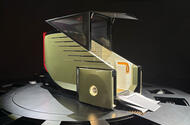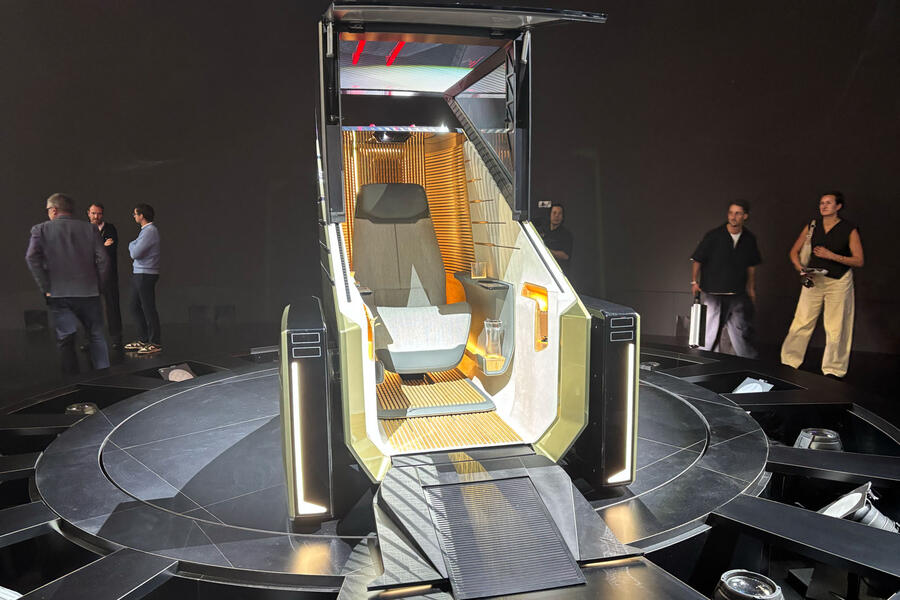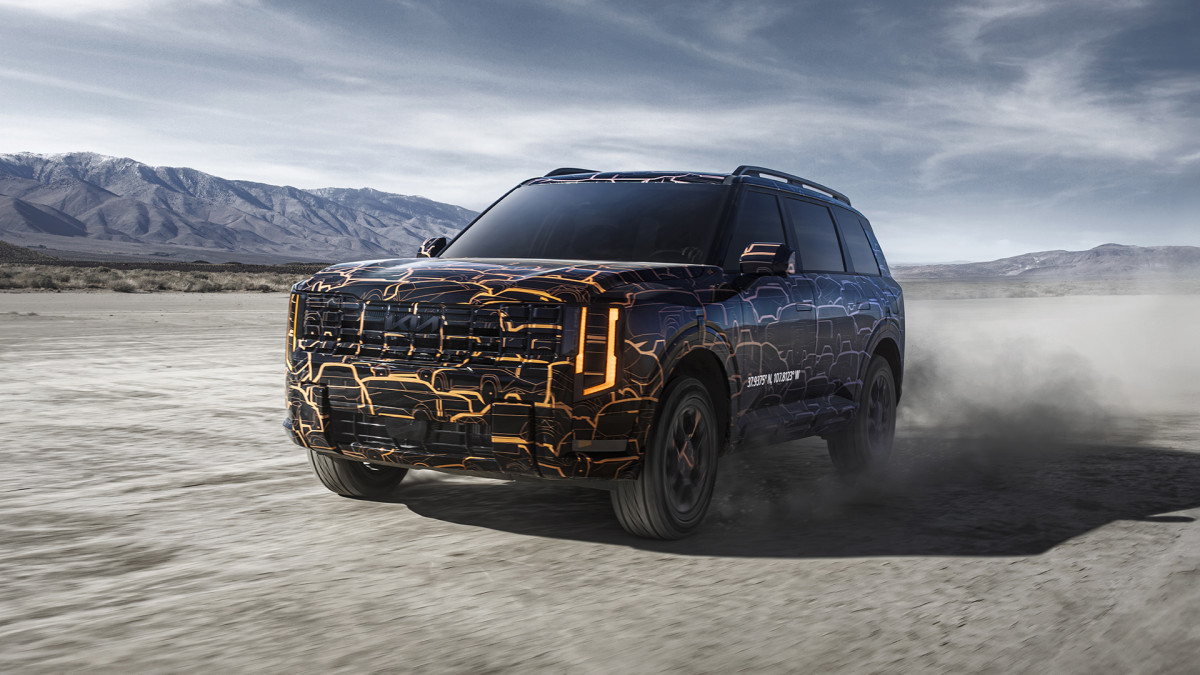Lexus’ Tiny Self-Driving Pod Signals the End of Luxury Cars as We Know Them, Embracing Isolation in a World that Yearns for Connection!
The paradigm of personal mobility is undergoing a seismic shift, as evidenced by Lexus’ recent unveiling of the Micro LS concept at the Tokyo Motor Show. This tiny autonomous vehicle, designed solely for a single occupant, is both a bold foray into an uncharted market and a reflection of modern urban realities. With rising urban congestion, limited road space, and growing environmental concerns, the Micro LS may symbolize a radical departure from the traditional notions of luxury automobiles. As society grapples with issues of individualism versus community, the very existence of such a vehicle highlights the tension between a desire for personal space and an increasing need for collaboration.
Lexus seeks to redefine what luxury means in today’s context; it is no longer just about expansive interior space and high-performance engines. Instead, it’s about creating an exclusive experience tailored for one. The Micro LS harkens back to the days when personal automobiles defined status; however, in this new era, where micro-mobility is becoming increasingly critical, traditional vehicles appear cumbersome, if not outdated. The Micro LS’s design reflects an urban aesthetic influenced by modern architecture, deploying innovative space-saving features to maximize efficiency within its minuscule frame.
This three-wheeled vehicle embodies the contradictions of contemporary life. It promises a luxurious, personalized escape while simultaneously relegating the driver to isolation. The inclusion of handcrafted interiors, a reclining leather seat, and custom glassware suggests an adherence to the Lexus ethos of luxury. However, one cannot help but question the ramifications of championing solitary travel at a time when social interactions are increasingly conducted online or through digital means. The irony is palpable: as we drift further into an age of hyper-connectivity, Lexus is proposing a retreat into solitude.
Innovations surrounding the vehicle expand beyond mere aesthetics; the driver experience is enhanced with a vertical display and control screen where a traditional steering wheel might have been. Such changes reflect not just technological advancements but also a fundamental rethinking of how we define driving. The Micro LS exemplifies a broader trend in the automotive industry toward automating tasks that were once human. The self-driving capability invites consideration of how much agency individuals want to relinquish to machines.
A potential avenue for this vehicle could be its functionality in urban environments where traditional cars face limitations. As city centers become congested and policies emerge to restrict vehicular access, the idea of a compact, autonomous pod becomes more appealing. However, it also raises questions about social equity and accessibility. Lexus asserts that their design will accommodate custom wheelchairs, hinting at an awareness of the importance of inclusivity in the future of mobility. Still, the essence of luxury—often equated with exclusivity—could mean that such innovations may only cater to a select few.
The Micro LS stands as a testament to automakers’ pivot toward sustainability and the exploration of new market opportunities, especially as they seek to stay relevant in an evolving landscape. Toyota’s introduction of Century as a new luxury marque allows Lexus to diversify its offerings and grow beyond traditional expectations. Moreover, it challenges the concept of exclusivity in luxury goods; can a tiny autonomous pod deliver the same status symbols that larger, more conventional luxury cars have represented? As the Micro LS emerges as a potential answer, society may need to reevaluate its perceptions of luxury, community, and individual value.
This evolution ties into broader societal themes, particularly the notion of individualism versus community interdependence. The luxury of personal escape can also signify a retreat from communal life, perhaps exacerbating feelings of social isolation in an already fragmented world. This tension invites discourse on the moral complexities of a future filled with technologies that serve to separate rather than unite us. The Micro LS could either symbolize a new era of personalized luxury or contribute to the growing divide in urban societies.
Furthermore, the Micro LS questions how automotive brands will navigate an uncertain future amid shifting consumer expectations, climate imperatives, and technological advancements. Introducing a product that optimally suits a compact lifestyle while maintaining a veneer of luxury is a significant gamble. Lexus aims to entice consumers who value both elegance and practicality, yet the success of such an audacious venture remains to be seen. As micro-mobility continues to gain traction, the stakes are high for manufacturers seeking to balance innovation with the preservation of their luxury heritage.
The ambition of Lexus underscores a broader cultural movement, reflecting how companies react to changes reshaping urban landscapes. Economic factors, environmental concerns, and shifts in consumer behavior are colliding in a perfect storm, prompting a reevaluation of foundational concepts in the automotive industry. The sheer size and scale of typical luxury cars, once seen as indicators of success and abundance, are becoming liabilities in contexts where smaller, more maneuverable, and eco-friendly alternatives are gaining favor.
As we look to the horizon for what vehicles will define the future, Lexus’ Micro LS encapsulates a critical moment in the evolution of personal transport. It symbolizes a challenging and paradoxical world where luxury increasingly embraces minimalism, solitude, and technological reliance, raising questions about the very essence of what it means to experience opulence in an urban setting. The industry stands at a crossroads—will we embrace individual luxury in isolation, or can we find ways to interlace this new trajectory with a renewed sense of communal interaction? In navigating this uncharted territory where we seek personal pampering while desiring connectivity, legacy brands must make decisive choices that will shape the future of not just their company but society as a whole.

Tiny autonomous pod is a three-wheeled first class suite for tightly packed modern cities
Lexus is gearing up for a potential entry into the single-seater market – but rather than building an open-wheel track car, it’s exploring ways of making the luxury saloon experience as small as possible.
The brand has revealed the new Micro LS concept at the Tokyo motor show as a vision of how its trademark design cues and luxury ethos could translate into an urban microcar format to give “a luxury mobility experience for one”.
It is tiny. Lexus has given no technical details, but the three-wheeler is only slightly wider than the single seat within, and looks to be around the same length as the Citroën Ami – around 2.5 metres.
Revealed alongside a revolutionary six-wheeled MPV concept that could evolve into a successor to the LS saloon, the Micro LS forms part of a strategy to diversify and expand the Lexus portfolio – the brand having been given new creative freedom by Toyota’s launch of Century as a new dedicated luxury marque to sit at the top of its portfolio.
It is a “completely new kind of mobility” said Ian Cartabiano, who runs Toyota’s California design studio, designed “to create a luxury mobility experience for one, seamlessly connecting to the last mile.
“It is designed for point-to-point, intra-city travel where roads are tight or where traditional cars aren’t even allowed at all.”
With a design influenced by urban architecture and a raft of innovative space-saving features – including a canopy-style entrance and slide-out cargo compartment (housing a bespoke Lexus luggage set) – the Micro LS is effectively a self-driving pod with a business class-style cabin.
It features a leather, armchair-style reclining seat; a huge vertical display and control screen (where a steering wheel would ordinarily be); floors and walls finished in bamboo – and a bespoke glassware set for drinks on the move.

The design target was “to create a rejuvenating escape”, Cartabiano said, and to challenge the design conventions of micro-mobility.
“Small can sometimes look a little too cute. We want this to look premium”, he said, emphasising the quality implications of its handcrafted interior and the exterior design cues that link it to its full-sized Lexus siblings.
It can also accommodate a custom Lexus wheelchair, because “the future of mobility in our ecosystem should be accessible to everyone”, Cartabiano said.
The company has not given any firm plans to put the Micro LS into production, but has outlined plans to redefine the Lexus brand in the coming years under the banner of ‘discovery’ – meaning it will explore new concepts (not just vehicular) and tap into new market opportunities where it can.
“One of our brand’s greatest strengths is the diversity of our product portfolio, as well as the breakthroughs that are each distinct and each with their own attributes – yet they are all unmistakably Lexus,” Cartabiano said.



